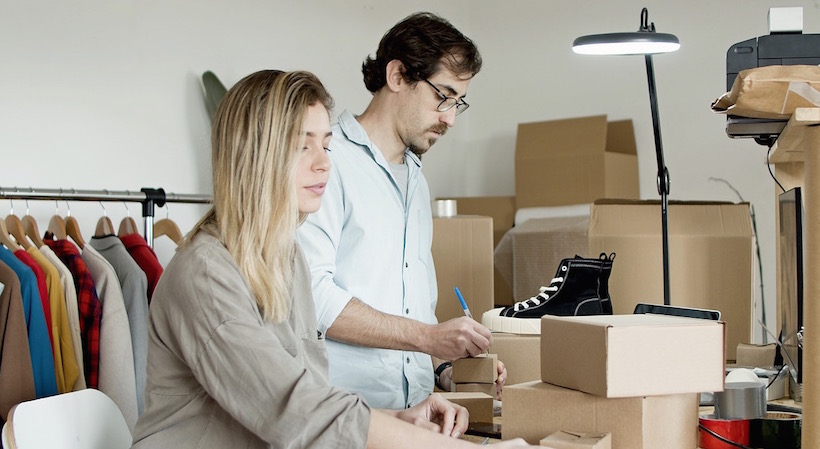With consumers spending more than ever online, it’s no wonder why so many entrepreneurs are joining e-commerce marketplaces in droves. Consumers around the world spent $900 billion at online retailers in 2020, according to report from the Mastercard Economics Institute. Up to 30% of that shift is expected to be permanent, too.
This growth, regardless of sales channel, has been massively powered by startups and small businesses. From side hustlers selling innovative products out of their homes, to local brick-and-mortar shop owners pivoting to digital due to reduced foot traffic, the e-commerce opportunity represents a lifeline to sales success in an otherwise challenging economic climate.
For new business owners just beginning their online journeys, the drive and passion to succeed can propel you through early obstacles — but so can a little homework and mentorship from others who have gone before you.
Here are a few stories from entrepreneurs who overcame challenges to run profitable e-commerce businesses:
Take time to educate yourself
Ebony Robert, owner of Ebony’s Beauty Hair and Skin Care and a former teacher raising five children, invented her own soap to help alleviate her son’s eczema symptoms. She realized she could help more people who suffered from the same problem, so she decided to list her product on Amazon — a move that led to an early explosion of sales.
Robert cautions sellers to keep in mind that the early days of a product launch are filled with ups and downs:
“Make sure you do your research, which might seem time consuming, but it’s necessary to make it through the constant shifts of having your own business,” Robert said.
She relied on advice from retail consultants, various small business groups and online videos to understand key tasks like how to apply for patents and trademarks.
“Nothing is done overnight,” Robert said. “There were days when sales were slow and I thought, ‘OK, is this something I still want to pursue long term?’ But my family helped support me and I just kept looking for more resources and answers out there to drive me to where I am today.”
Robert now has more than 300 products offered through her brick-and-mortar and online store, and Walmart recently started stocking her soap.
Navigating manufacturing costs
Rob Reilly is the founder of Pet Peeves LLC and inventor of the Pet Peeves™ Vest, a product that signals whether or not a pet is friendly from a safe distance in order to create safer interactions between pets and their owners. He’s also a father and full-time graphic designer.
“The biggest challenge I’ve faced through the process of bringing my products to market is the manufacturing cost,” Reilly said. “Not only did it take nearly four years to save the funds to manufacture the minimum order for the Pet Peeves™ Vest, but there were also policy issues between the U.S. and China that caused the cost of manufacturing my product to nearly double. I did not expect that!”
Joelle Mertzel, founder and president of Kitchen Concepts Unlimited, LLC and inventor of the Butterie butter dish, found the process of tooling to be particularly frustrating at first, due to exorbitant costs:
“Early on, I met someone at a houseware show who told me about the costs associated with tooling, which is the process of making the steel molds for each part of your product,” Mertzel said. “It was much higher than I ever anticipated, and I ended up finding a reasonable option overseas.”
Another part of the manufacturing process that also concerned Mertzel was the actual process of setting the design in steel.
“What if I got in front of a retailer and they asked me to make changes? I’d have to spend more (money) to change the mold,” she explained.
Mertzel advises entrepreneurs to not be afraid to socialize their ideas and prototypes as much as possible to make sure major investments in manufacturing are worth it. Aside from doing her own market research to understand who her core audience would be, she took a chance and brought her prototype to a national chain store in her town to get the store manager’s opinion.
“He looked at my prototype and said, ‘I would love to sell this,’” Mertzel said.
Six months later, Mertzel was working with regional buyers to get the product on the store’s shelves, which confirmed for her that the upfront cost of the mold was an investment in her company’s future
Work within retailer requirements
By launching a product, inventors may not fully realize they are joining a worldwide system of retail commerce comprised of manufacturers, retailers and logistics providers. Even though some entrepreneurs simply start selling via one online marketplace, those interested in growing their businesses should gain a thorough understanding of retailer requirements and guidelines to maintain credibility as they grow and diversify retail partners.
One key component of building credibility is getting an authentic UPC barcode, which is like a passport to working with multiple retailers. Entrepreneurs with limited budgets may find that licensing individual Global Trade Item Numbers (GTINs) for $30 each will set them up for success. GTINs are the product identification numbers encoded into UPC barcodes and uniquely identify a product, whether it is sold in a store or online.
For businesses that plan to launch 10 or more products or product variations, another option is to license a GS1 Company Prefix, which allows brands to create authentic GTINs in bundles of 10, 100 and other bulk quantities.
This can end up being one of the most critical steps to prove your product is, in fact, linked to your company and your name, and not someone else’s. Third party barcode sellers offer very cheap UPCs, but many small businesses have found those barcodes may have been used before, or they may identify the product as coming from another company.
For Reilly, purchasing one single GS1 UPC was an easy way to start his brand off the right way from day one:
“Being able to afford that barcode at a reasonable price is huge for somebody like me,” Reilly said. “It is going to help me increase my chances of becoming a viable vendor for many types of retailers, especially now that so many marketplaces are trying to fight counterfeiters. I know they’ll be looking for proof that I own my product.”
Key takeaways
Entrepreneurs new to selling online must be aware that product listings could be hidden, delisted or mistaken for counterfeit goods if proper UPC identification is not in place.
For example, a recent announcement sent to Amazon sellers reinforced the company’s long-standing policy that products must have valid UPC codes in order for listings to be approved.
Ultimately, selling online is huge opportunity for tenacious entrepreneurs looking to pursue their dream of launching a product: about 36% of consumers now shop online weekly, an increase from 28% before the pandemic, according to a global survey by Selligent Marketing Cloud.
By learning from other businesses, consultants and experts, entrepreneurs can be on their way to building a credible, prepared and viable online business.
Originally published May 13, 2021.






